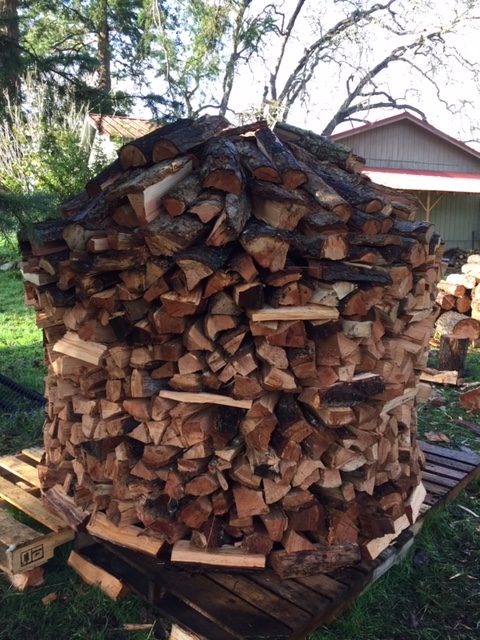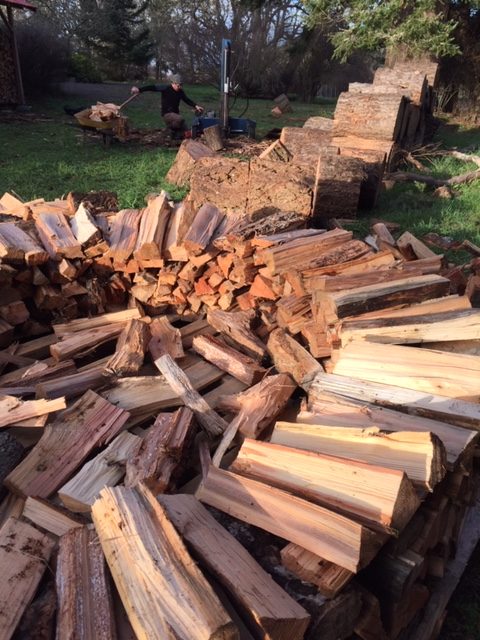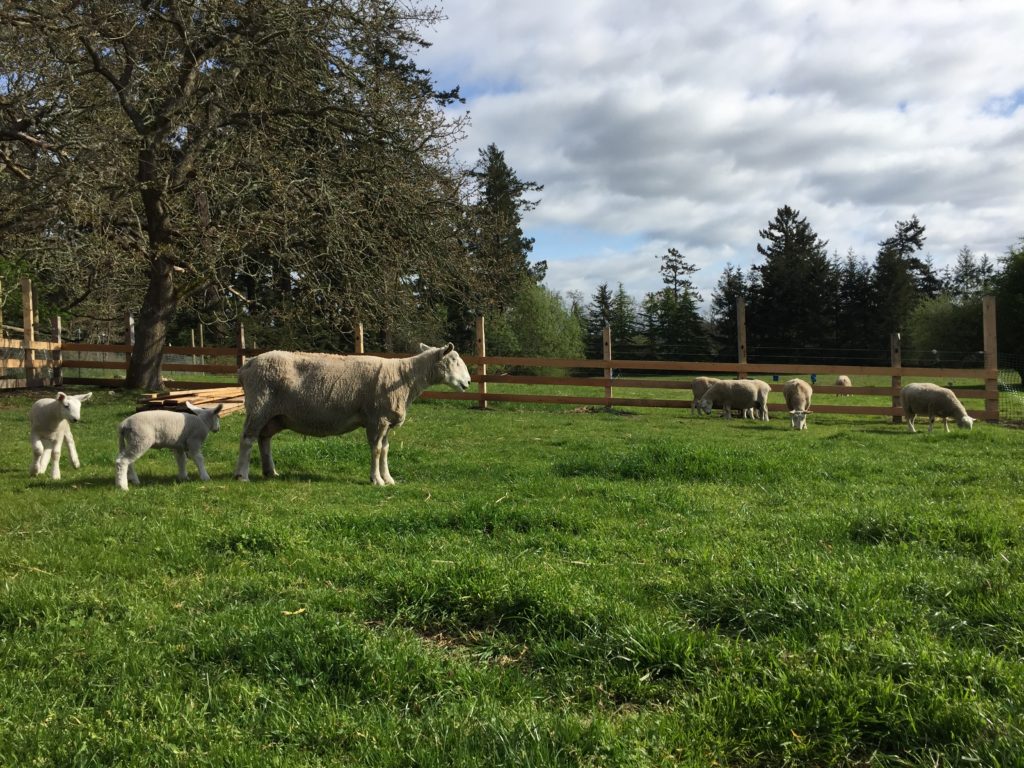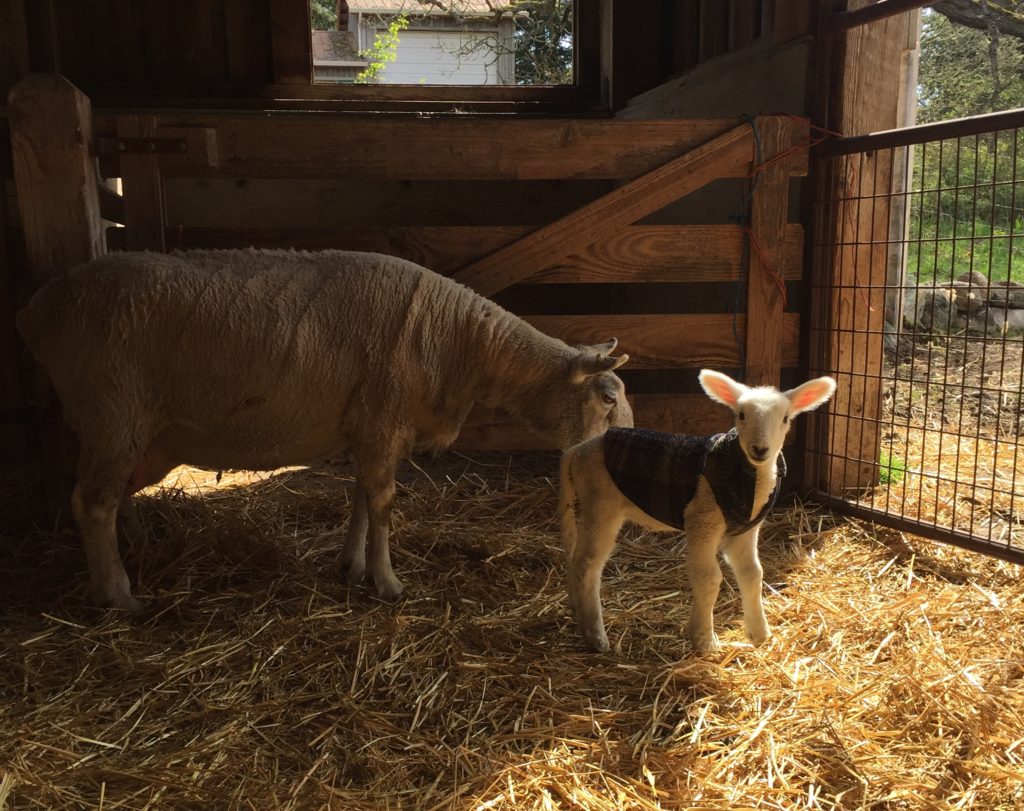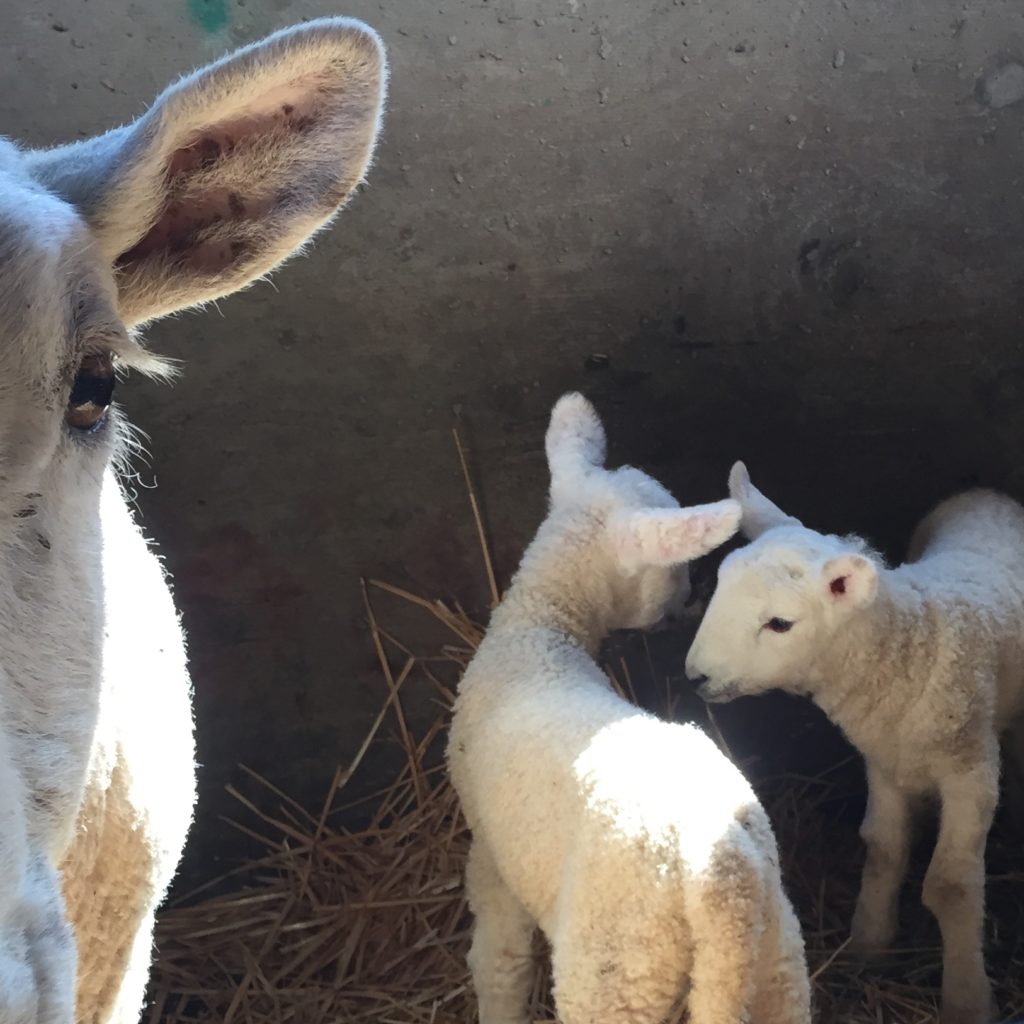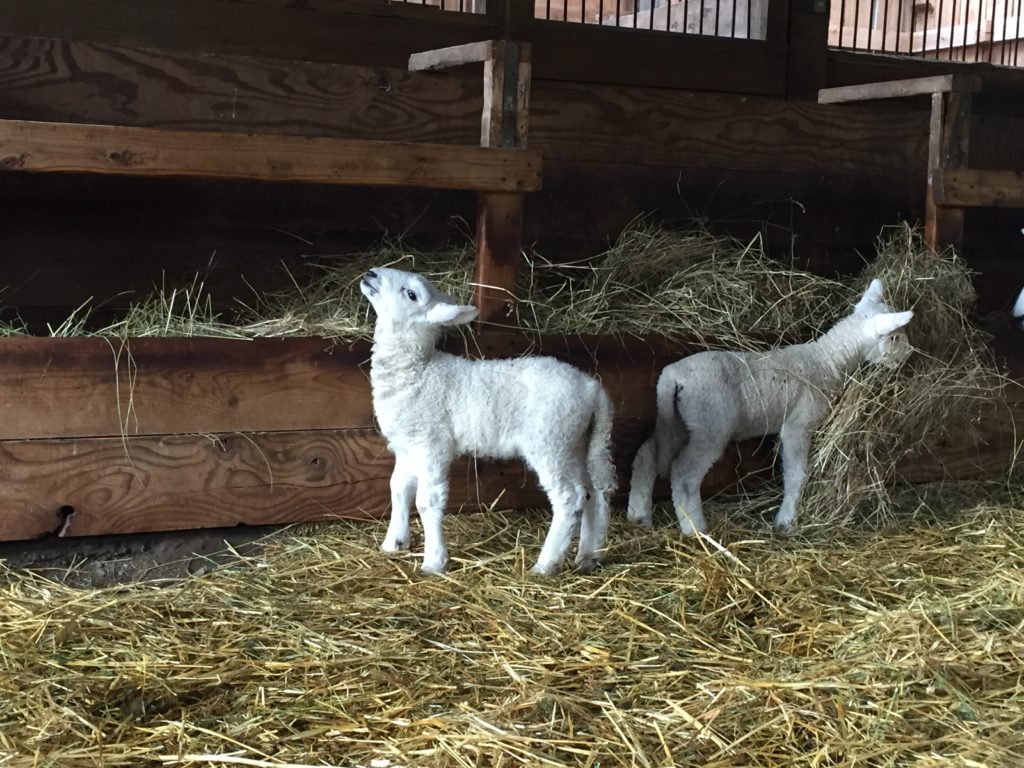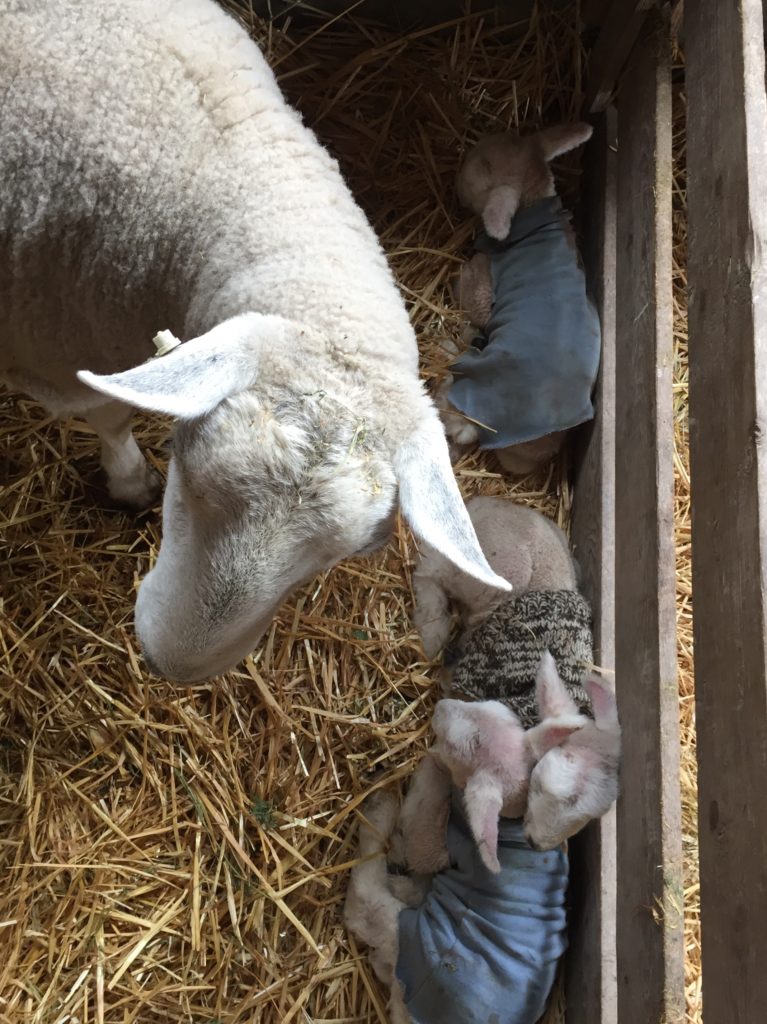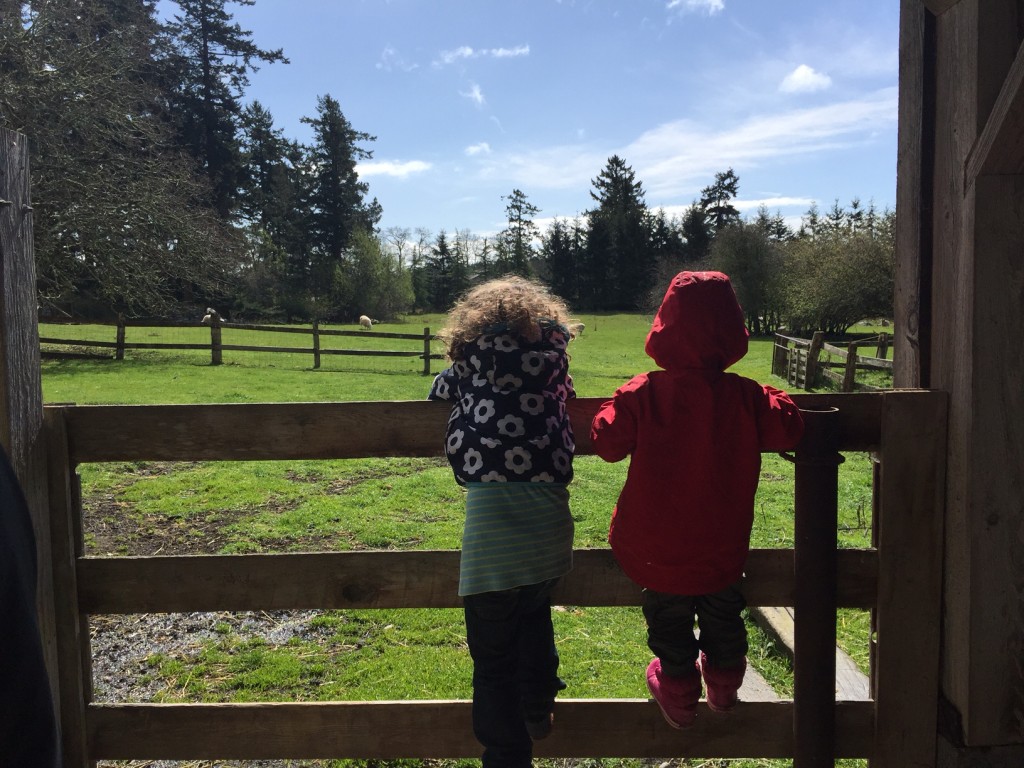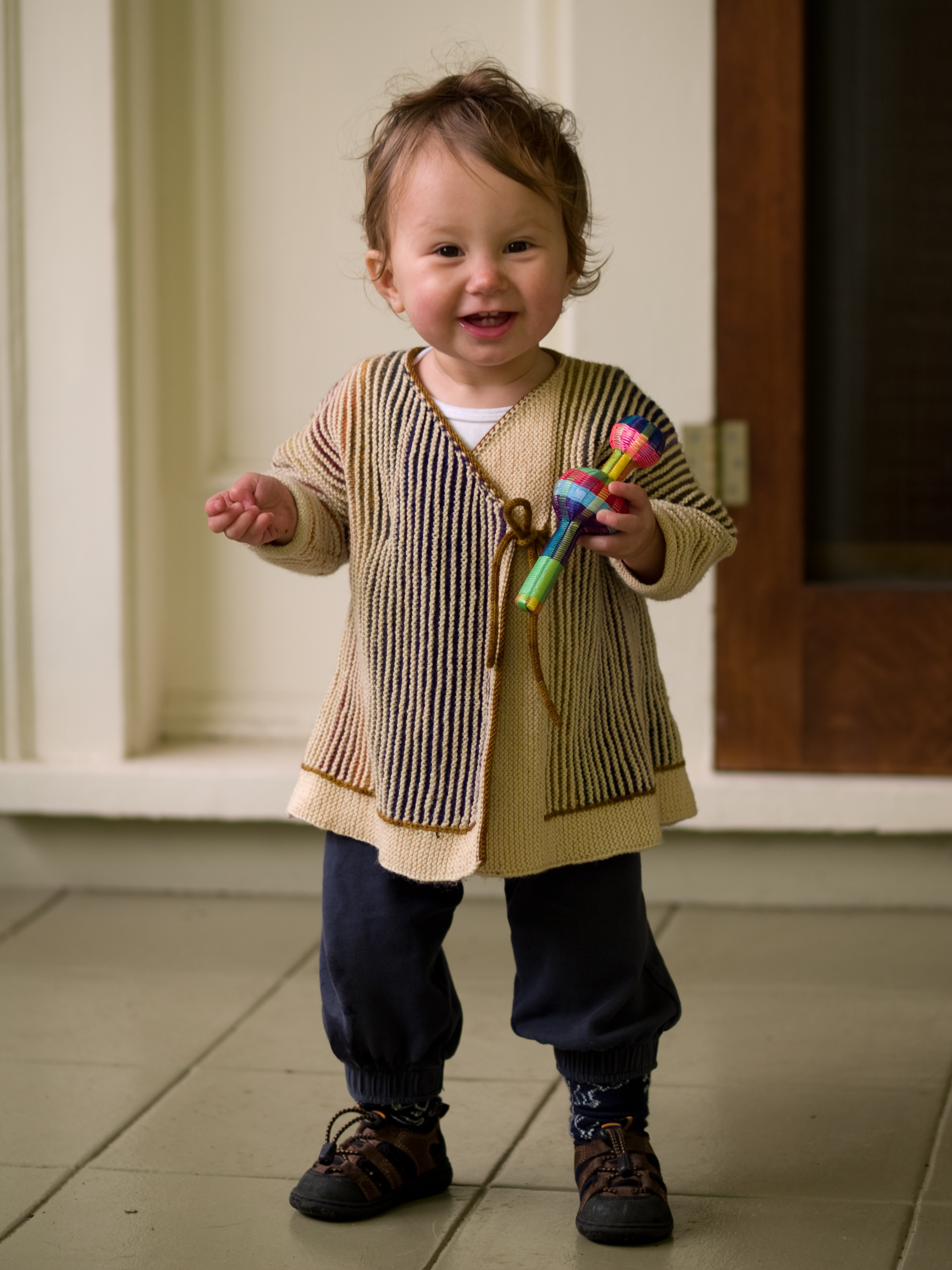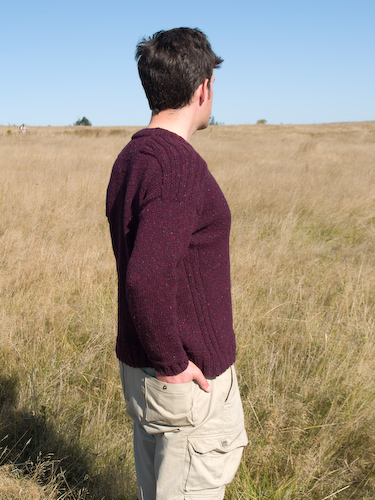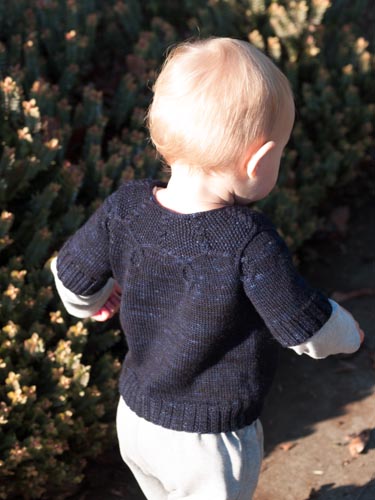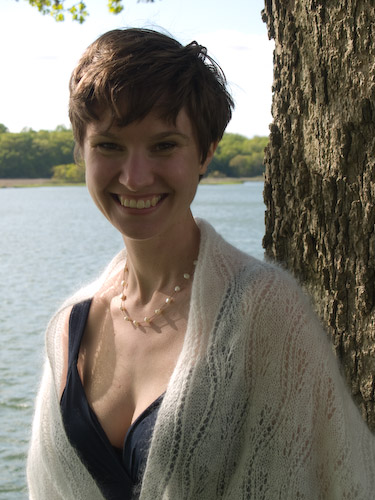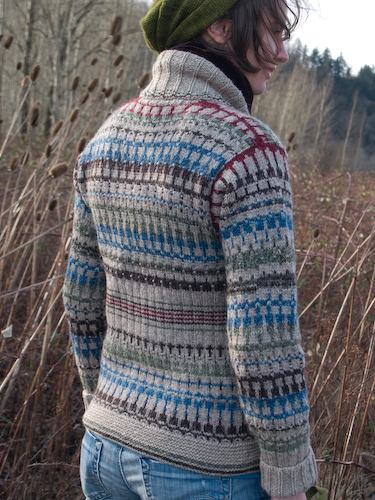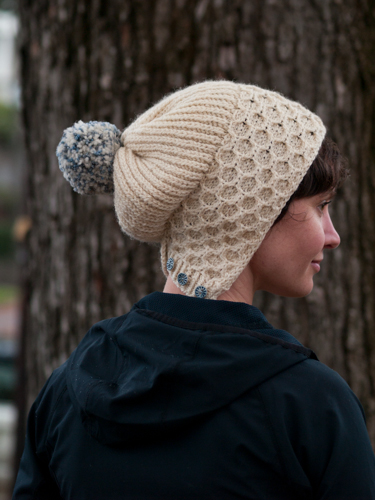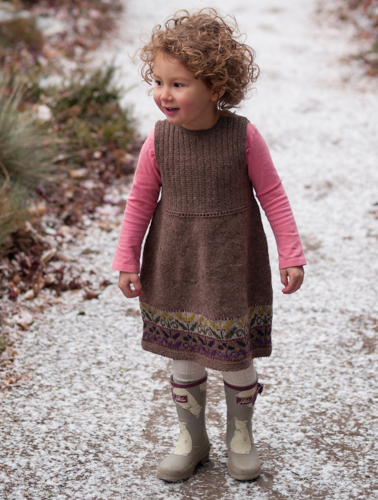A clear and sunlit close to this circle ’round the sun. The children slept over with friends, so it was a queerly quiet day. I spent a pair of morning hours learning marimba parts to play with a new band and then we fell to chopping firewood. We’ve been building German-style round stacks that we roof with pieces still wearing their bark, so the whole stack can season for next winter without needing shelter.
At three I rode a horse up a hill for a glimpse of the sun winking low over the sea. It was the first time the mustangs have been separated in years and they were not pleased. Horses rely on their herdmates to feel safe, so my mount was anxious and jiggy, pirouetting and bending to nibble my boot toes in her need for connection and reassurance. The one left behind was wild with worry and spent our whole ride tearing around the field. Every inch of her winter coat was soaked with sweat and she wouldn’t come to me for a rub down.
I walked back down to the pasture after we put the kids to bed. It’s a chilly night, almost freezing, and I wanted to be sure Yahzi had cooled down properly. A still, calm night, with Orion pricked over the barn amid the thin clouds. I wore my headlamp to find the horses by their eye shine, but Yahzi mistrusts the bright light and kept her distance. I brought her a pan of minerals to lick and fetched towels from the lambing kit to dry her a little more. With the headlamp stowed in my pocket, there was still starlight and the glow from Victoria and the gleam of houses across the valley—so many more houses on Little Mountain than there used to be—and I could work over the horse’s rough and muddy coat by feel anyhow. She accepted the toweling with relish, stretching her face to the sky so I could rub harder beneath her neck. The barn cat ghosted along the hedgerow nearby, pale and formless in the dark.
I remember being just a little afraid of the night woods as a child, secure in the knowledge that there is nothing dangerous abroad on this island but still tingling with imagination, straining to hear beyond the drum of my own heartbeat and to categorize any scuffling whisper in the trees. A flashlight makes it worse. The dark is less knowable beyond the limit of its light. I have learned to switch off my lamp and love the darkness on this farm. I stand with the horses and listen to them licking and grazing, I breathe the falling damp and scry among the wan stars—yes, the clouds are thickening, the temperature is climbing a very little, the bright weather is done and the rain will be coming tomorrow or the next day. In a couple of months I’ll be making this night journey to the barn to check the lambing ewes.
The year is turning. The wood is stacked high. The family is sleeping. I stay up late to stroke the dog as she quivers and pants at the fireworks. I have too much steadiness, too much wry self-knowledge (I am to be forty next summer, after all) or some combination of the two for resolutions, so I make none. I have no reasonable expectations that the coming year will be better or worse in sum than the one we’re leaving. On we hurtle through space, and if I have a wish it’s for clear eyes to notice the good and open hands to extend the good to others. A soft night to you all and joy in the morning.
